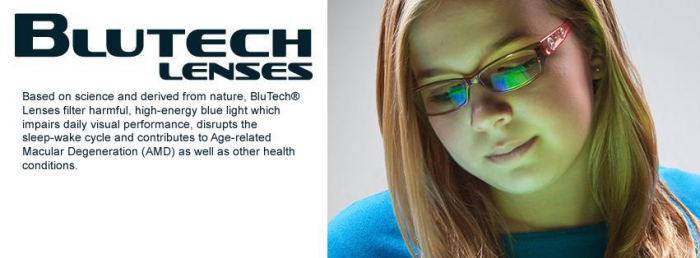Computer Vision
Squinting at computer, tablet, or mobile screens for hours at a time is a normal part of our lives in the 21st century. Unfortunately, eye problems associated with this activity are also on the rise. Even if you have never had eye problems before, you may have noticed computer vision syndrome symptoms after two or more hours of screen time. Signs include:
- Blurry vision
- Eye strain and discomfort
- Headaches
- Dry, scratchy eyes
- Neck and/or shoulder pain
Even if your symptoms are mild, they can worsen and cause other vision problems if not addressed. Our optometrists, Dr. Hastie and Dr. Jones, can help.
Diagnosis and Treatment of Computer Vision Syndrome
The severity and length of computer vision syndrome symptoms depends on how long you stare at the computer, your posture, lighting, glare, the angle of the monitor, and whether or not you have other diagnosed or undiagnosed vision problems. If you already suffer from astigmatism, farsightedness, presbyopia, aging eyes, and/or diabetic eye problems, your computer vision symptoms may worsen. This can even be the case if you already have prescription contacts or glasses. Many regular eyeglasses and contact lenses are not designed to deflect the problems caused by computer screens.
Our doctors at Valley Vision Eyecare will take your symptoms, pre-existing conditions, and potential undiagnosed conditions into account as they perform the following eye tests:
- Visual acuity—Measures the quality of your current vision.
- Refraction—Tests the potential lens prescriptions that would optimize your vision.
- Focus and Eye Coordination—Tests how well your eyes work together and how quickly and accurately your eyes are able to focus on objects and varying distances.
From these measurements, the doctors can design a treatment plan to help relieve your symptoms. For people with otherwise normal eyes and vision, a set of specially-designed glasses used during the time you are working on the computer can be very helpful. For patients already wearing contacts or glasses, new, more computer-friendly prescriptions are available. In addition to these treatment options, there are many things we can suggest to cut down on computer eye strain problems:
- Computer setup—Adjust your monitor so that it is about 15-20 degrees lower than your eye level when seated between 20-28 inches away from the screen. Reference materials can be placed on a document holder between the monitor and keyboard, or to the side, but positioned for as little head movement as possible. Also invest in an anti-glare screen for your monitor to help reduce glare from surrounding lights. Be sure to sit and work with proper posture.
- Adjust Lighting—If you can, reposition any lighting (or your computer) to minimize glare and use natural lighting whenever possible.
- Eye Rest and Blinking Breaks—Every 20 minutes during your work, look away toward a distant point for 20 seconds to refocus your eyes, and give them a 15-minute break after each 2-hour computer session.
- Also remember to blink more frequently to keep your eyes moist. Blink Exercises are recommended: Blink exercises require frequency. They must be done every 20 minutes for 4-6 weeks to be effective. Use an audible signal such as an egg timer, cell phone alert or computer to remind you, especially during tasks requiring sustained focus.Close both eyes normally, pause 2 seconds and open. Then, close the eyes normally again, pause 2 seconds and then squeeze the lids together. Open both eyes. Repeat every 20 minutes.
- BluTech Lenses (available in prescription and non prescription)

